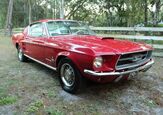EV Development Might Cost Us Mazda's Iconic Future

Mazda’s long-rumored Iconic SP sports car may not even make it to production after all.
Key Points
- Mazda’s plans to bring the Iconic SP sports car to production appear to be on hold, as the company focuses its resources on developing a new dedicated EV platform scheduled for 2027.
- Chief Technology Officer Ryuichi Umeshita said the rotary-electric coupe remains his “dream car,” but admitted that the project faces financial obstacles.
- Mazda continues refining its rotary hybrid technology—now featured in the new Vision X-Coupé concept—with long-term goals to make the system efficient enough to power a production sports car.
Two years after the concept’s unveiling at the 2023 Tokyo Motor Show, Mazda execs told Autocar the future of the project is now undefined as the automaker redirects resources toward developing a new electric vehicle platform set to debut in 2027.
The Iconic SP was introduced as a sleek coupe with an unusual hybridized powertrain after every enthusiast's heart—a twin-rotor rotary engine providing juice to a 360-horsepower electric drivetrain.
At the time, Mazda positioned it as a serious engineering exercise rather than a design study, with then-design chief Masashi Nakayama telling reporters the car had been “designed with real intent to turn it into a production model in the not-so-distant future.”
Earlier this summer, Mazda's Chief Technical Officer Ryuichi Umeshita even pointed to the Iconic SP as a “good successor for RX-7,” though he stopped short of confirming that the legendary badge would return.
But now Umeshita-san admits that the Iconic SP program’s biggest challenge is not technical feasibility—it’s financial. “Technology-wise, I believe it’s possible,” Umeshita-san was quoted as saying. “The only outstanding issue is financial.”
Since the concept’s debut, Mazda has dramatically restructured its investment strategy. The company has reduced planned spending on electrification by roughly one-third, or a bit more than $3 billion, as it pursues what it calls a “lean asset” strategy.
For a small manufacturer like Mazda, developing a dedicated EV architecture alongside a low-volume halo car may be financial folly. Kind of like restoring a classic 1969 Camaro while trying to make house payments and keep three boys fed and watered.
Even if the Iconic SP dies on the vine, its legacy should live on through other projects.
Mazda’s new Vision X-Coupe—a four-door plug-in hybrid grand tourer revealed last week—borrows some of its proportions from the SP’s styling and refines some of the engineering principles. It pairs a turbocharged two-rotor engine with electric motors for a combined output of 503 horsepower. It also looks like a worthy successor to the RX-7.
The setup runs on carbon-neutral fuel derived from microalgae and incorporates a prototype carbon-capture system designed to reduce tailpipe emissions, potentially achieving what Mazda describes as a “carbon-negative” powertrain.
While Mazda insists it won't abandon the idea of a rotary-powered sports car, expect the automaker to keep positioning the Miata as its core enthusiast model. The company has also reconvened its rotary engine dev team to chase improvements to the Wankel.
Engineers are reportedly working to address the rotary’s traditionally higher emissions and fuel consumption, with Umeshita-san estimating that “two to three more years” of development will be needed before Mazda can use the engine to directly power a vehicle’s wheels again, rather than serving as a generator, as it does in the MX-30 plug-in hybrid and SP.
I'm excited, as I'm sure many of you are—just don't call me until they figure out how to make the apex seals last.
Become an AutoGuide insider. Get the latest from the automotive world first by subscribing to our newsletter here.

An experienced automotive storyteller and accomplished photographer known for engaging and insightful content. Michael also brings a wealth of technical knowledge—he was part of the Ford GT program at Multimatic, oversaw a fleet of Audi TCR race cars, ziptied Lamborghini Super Trofeo cars back together, been over the wall during the Rolex 24, and worked in the intense world of IndyCar.
More by Michael Accardi




































Comments
Join the conversation
Beautiful design, but possible electric powertrain is too complex, likely making it prone to problems. Nope, not for me.